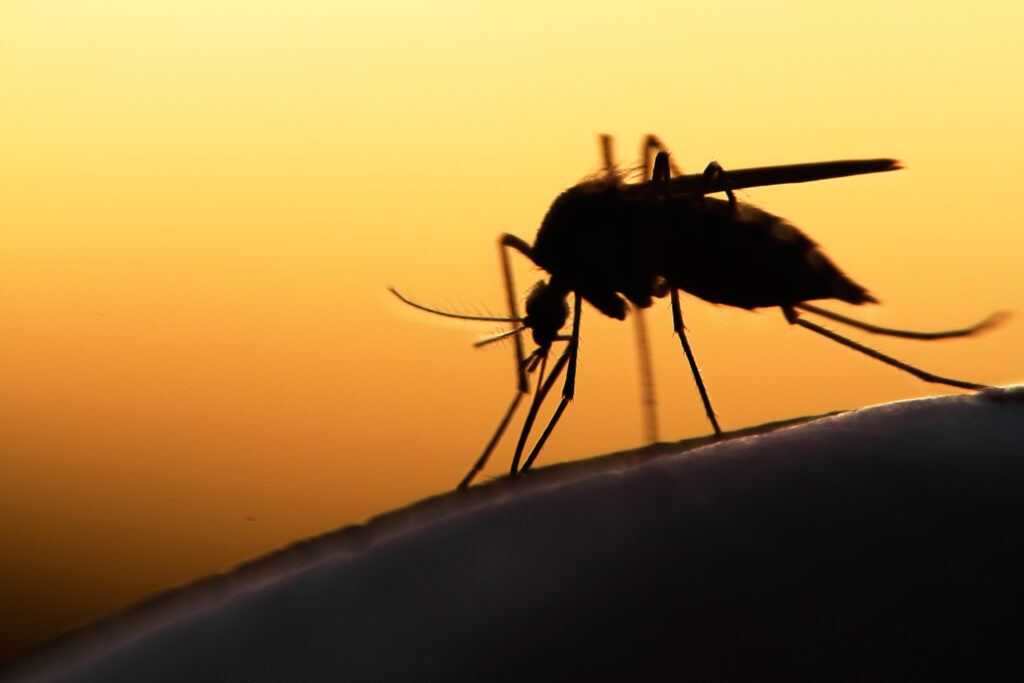We must invest in Australia’s mosquito and flavivirus surveillance to support rapid detection during mosquito seasons, ideally before we see human cases.
In early 2022, the flavivirus Japanese encephalitis virus (JEV) unexpectedly caused an outbreak of encephalitis in humans and porcine stillbirths in piggeries in south-eastern Australia.
The virus had caused a handful of sporadic cases in the extreme north of the country in the preceding decades, but locally acquired cases in the southeast were completely unheard of and precipitated the declaration of a Communicable Disease Incident of National Significance by the Australian Government Department of Health and Aged Care.
Much remains unknown about the Australian ecology of JEV, which circulates between water birds and mosquitoes and can spill over to humans and other mammals. Although it was initially unclear whether JEV would re-emerge in the southeast following this outbreak, in late 2022 further cases were identified.
Later in 2022, significant flooding led to increasing numbers of water birds and mosquitoes and provided favourable conditions for mosquito-borne disease outbreaks; and, by early 2023, another flavivirus outbreak began, with the first human cases of Murray Valley encephalitis detected in Victoria since 2011. Accompanying this, the related West Nile virus Kunjin subtype (KUNV) was detected in mosquitoes, but no human cases were identified.
Suddenly, Australia faced an unprecedented situation with three encephalitic flaviviruses circulating during the mosquito season.

Although most infections with these viruses are asymptomatic, for people who have encephalitis (less than 1%), the consequences are severe. Death occurs in up to 30% of cases, and between 30% and 50% experience long term sequelae, including neurological, cognitive or psychiatric deficits. Despite KUNV infection being slightly less severe than JEV and Murray Valley encephalitis virus (MVEV) infections, in practice it is not possible to differentiate between the viruses clinically. Effective use of laboratory diagnostics in a case of encephalitis is challenged by serological cross-reactivity and polymerase chain reaction (PCR) methods, which, although highly specific, are relatively insensitive in the setting of brief viraemia.
Over the past two years, Australia has recorded 45 cases of Japanese encephalitis and 26 cases of Murray Valley encephalitis, with a total of 16 deaths (Victoria, Northern Territory, Western Australia).
What did we do?
In response to the JEV outbreak, a targeted vaccination campaign was implemented. Initially the Australian Government’s vaccine supply was limited and jurisdictions needed to prioritise populations who were at greatest risk of infection.
Now there is greater availability of JEV vaccine and an opportunity to vaccinate people in high risk regions to minimise the impact of future outbreaks.
Cases of JEV infection that present to health care represent the tip of the epidemiological iceberg, with asymptomatic infections and many milder presentations likely going undiagnosed. To measure the extent of the outbreak, we supported a national serosurveillance program to better understand the distribution of and risk factors for JEV infection to inform our prevention and preparedness strategies ahead of future mosquito seasons.
Serosurveys conducted throughout late 2022 found that 3% of the northern Victoria population and one in 11 people across five towns in New South Wales had evidence of prior JEV infection. For global context, a serosurvey of unvaccinated adults in Kerala, India, where JEV is endemic, returned a seroprevalence of 16%.
The Australian serosurveys show that a large number of people were likely infected within a short time period, but, most importantly, that the majority of unvaccinated people do not have immunity from prior infection and, consequently, remain vulnerable to future infection.
Even though vaccines will support us to reduce the risk of JEV infection, there are no vaccines currently available for MVEV or KUNV.
Consequently, prevention relies on interrupting the interface between mosquitoes and humans. Governments have deployed multilevel strategies to protect at-risk communities from mosquito exposure, including bite-prevention education campaigns and integrated mosquito control programs. These strategies are dynamic and can respond to signals from early warning surveillance systems, such as trapping mosquitoes and testing for viruses with PCR, before spillover to humans occurs.
What happens next?
Often, in health, we hope for the best but prepare for the worst.
Looking back, the historic pattern of MVEV in Australia is underscored by sporadic cases in the north of the country interspersed with significant south-eastern outbreaks, often separated by many decades. The historic dataset for JEV in mainland Australia includes only two mosquito seasons, with back-to-back cases.
The future remains uncertain. JEV may settle into a pattern similar to MVEV, with sporadic cases and infrequent outbreaks. Despite considerable uncertainty, the abundance of animal hosts and capable vectors throughout Australia means that preparing for the long term persistence of the virus should be a priority.
However, the climate is changing and flood events are likely to increase in frequency and intensity. The final impact of these changes on the complex ecological relationship between mosquitoes, water birds, humans and viruses is yet to be determined. Globally, mosquito-borne diseases are on the move, with the dengue-carrying Aedes mosquitoes spreading in southern Europe and locally acquired cases of malaria detected in Florida and Texas, prompting tough questions on the role of a warming climate in these instances of disease spread.
The place-based names of these flaviviruses do not accurately describe their broad geographic potential, and there are hard-learned lessons of unexpected spread. In 1999, West Nile virus (WNV) was detected in the United States for the first time. Within three years, the reach of the virus had rapidly expanded from one state to being widely spread across the United States. The virus is now endemic in North America, with thousands of cases reported annually and millions of people having been infected over the past 20 years.
WNV causes less severe clinical illness than JEV and MVEV, but the viruses and their vectors are closely related. The recent history of MVEV demonstrates the potential for flaviviruses to rapidly expand, become endemic, and continue to cause substantial morbidity and mortality on an annual basis.
In a worst case but very plausible scenario, the recent emergence of JEV in Australia may only be the first step. There may be an ecological niche for JEV beyond the boundaries of the 2022 outbreak. The population is largely immunologically naïve to these viruses, and there is a potential for substantial disease and death to occur if this risk is not managed.
What do we need to do?
Vaccination, surveillance, prevention.
There is a need to invest in our mosquito and flavivirus surveillance to support rapid detection during mosquito seasons, ideally before we see human cases.
We also need to support the population to be aware of the risks from these flaviviruses, and to take action to protect themselves and others. This includes taking actions to avoid being bitten by mosquitos, such as applying repellent, limiting outdoor activity when mosquitoes are about, and covering up when outdoors.
All of these viruses are preventable. For JEV, with sufficient vaccine supply now available to meet demand for eligible groups, there is an opportunity for wide vaccination coverage in at risk areas. It is recommended that people aged two months and older living in high risk areas get vaccinated.
For all flaviviruses, protection from mosquito bites prevents infection. Clinicians have a key role as advocates in our health care system, and should actively consider who might be at risk and encourage vaccination and preventive actions.
There remain many unknowns. We don’t yet have enough evidence to fully understand where these viruses are most likely to emerge or who is at greatest risk. We don’t know how long the vaccine protects against JEV, or whether it may offer protection against other flaviviruses. We also don’t know if, as the climate changes, other mosquito-borne diseases, such as dengue or malaria, may enter and spread through parts of Australia.
Research is the cornerstone of effective evidence-based policy. Further work is needed to support our response, including a better understanding of what has happened in these recent outbreaks. Victoria will shortly commence an MVEV serosurvey in northern Victoria. We welcome the support of the medical community in recruiting for this important research.
Tilda Thomson is a Master of Philosophy in Applied Epidemiology (MAE) scholar at the Victorian Department of Health.
Dr Madeleine Marsland is a Master of Philosophy in Applied Epidemiology (MAE) scholar at the Victorian Department of Health.
Dr Maxwell Braddick is an infectious diseases physician and medical epidemiologist at the Victorian Department of Health, and the Royal Melbourne Hospital’s Victorian Infectious Diseases Service.
Dr Helen O’Brien is a public health physician and Senior Medical Adviser in communicable diseases at the Victorian Department of Health.
The statements or opinions expressed in this article reflect the views of the authors and do not necessarily represent the official policy of the AMA, the MJA or InSight+ unless so stated.
Subscribe to the free InSight+ weekly newsletter here. It is available to all readers, not just registered medical practitioners.
If you would like to submit an article for consideration, send a Word version to mjainsight-editor@ampco.com.au.

 more_vert
more_vert
Pathology Queensland has a JEV PCR available on request with same-day turnaround.